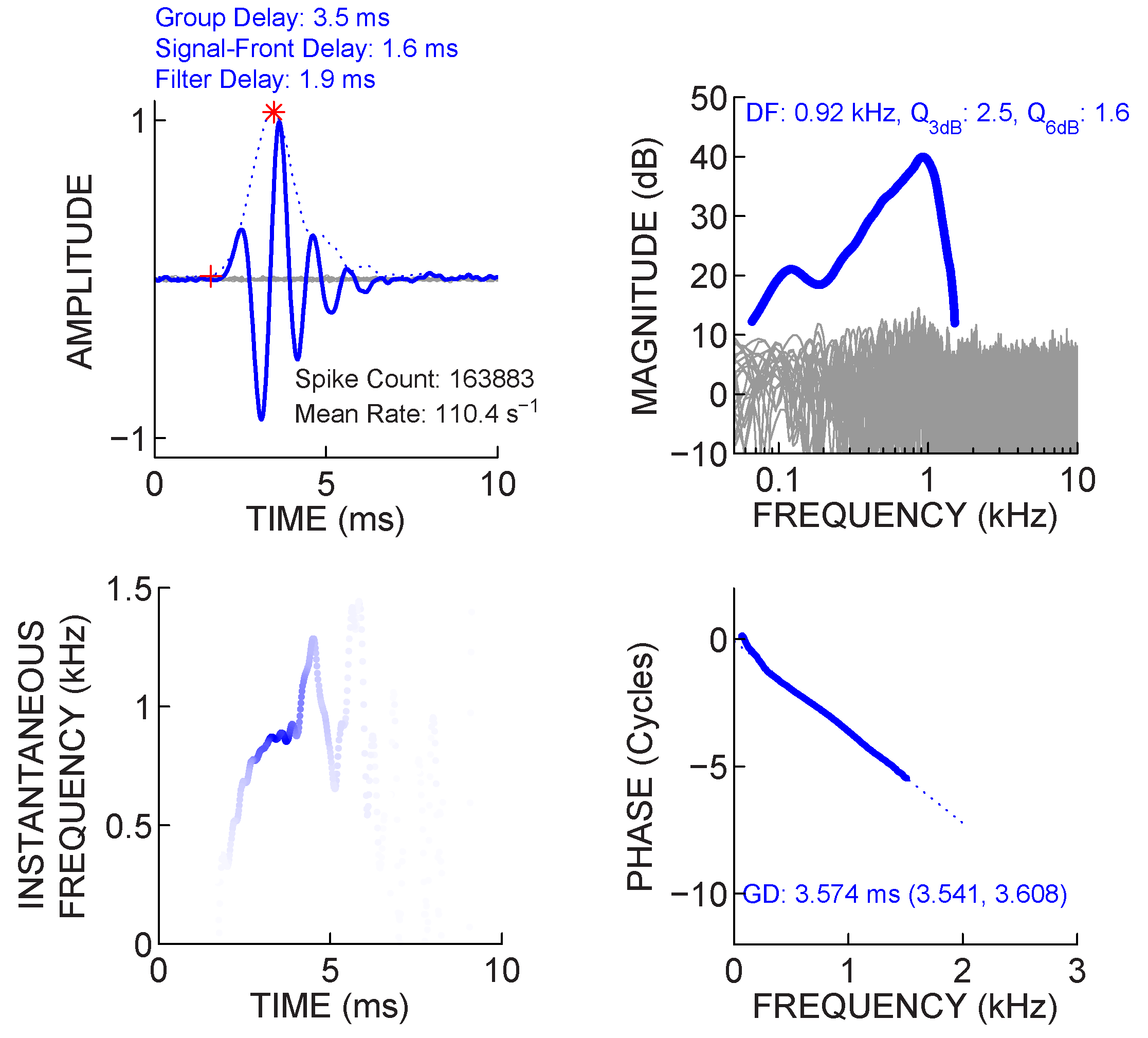Neural systems identification
We apply engineering-inspired quantitative analyses to neural data to characterize the transfer functions of elements in complex neural circuits. A simple example is the use of the Wiener series to characterize a neuron's "filtering operation" based on a white-noise input. From this approach, it is possible to estimate the impulse response of the system through a process of reverse correlation. The magnitude and phase response of filters derived in this manner have been fundamental in developing computational models of the auditory periphery.
Video 1: Auditory-nerve fiber spikes in response to broadband Gaussian noise
Spike trains in response to broadband Gaussian noise at a fixed input sound level are useful for characterizing the impulse response of neural systems.
Figure 1: Reverse-correlation function ("revcor")
The first-order cross correlation of the neuron's response with the Gaussian-noise input yields the first-order Wiener kernel, similar to the reverse correlation ("revcor") function.
Figure 2: Second-order Wiener kernel analyses
Second-order correlation can be used to reveal the even-order non-linearities of the system. Furthermore, singular-value decomposition can reveal both excitatory and suppressive components of these non-linearities.
(Some of) our (broad) questions in systems identification
- What can these approaches tell us about the function of the auditory efferent control systems?
- How can we leverage systems identification approaches to efficiently study the non-linear level-dependence of peripheral filtering?
- Can we dissect binaural neural circuits using these techniques?
Further reading
- Carney LH & Yin TC (1988). Temporal coding of resonances by low-frequency auditory nerve fibers: single-fiber responses and a population model. J. Neurophysiol. 60: 1653-1677.
- Recio-Spinoso A et al. (2005). Wiener-kernel analysis of responses to noise of chinchilla auditory nerve fibers. J. Neurophysiol. 93: 3615-3634.
- Henry KS et al. (2016). Distorted tonotopic coding of temporal envelope and fine structure with noise-induced hearing loss. J. Neurosci. 36: 2227-2237.
- Sayles M et al. (2016). Suppression measured from chinchilla auditory-nerve fibers following noise-induced hearing loss: adaptive tracking and systems identification approaches. Adv. Exp. Med. Biol. 894: 285-295.


